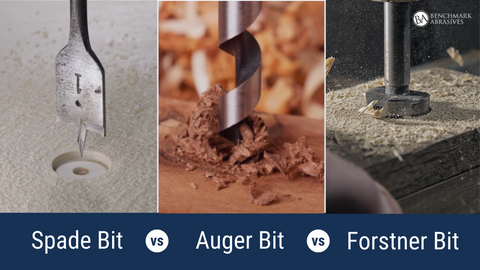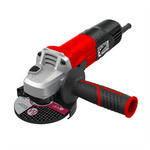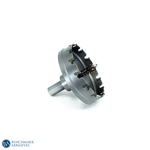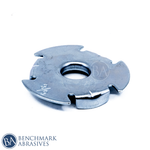
Spade bit vs Auger bit vs Forstner bit

A spade bit is primarily used to drill several holes rapidly. It is a less expensive and time-saving drill bit. You will need an auger drill bit to drill deep holes. An auger bit is a long drill bit used to drill holes in non-metallic materials (plastic and wood). However, if you are looking for a neat and clean partial hole, choose a Forstner drill bit. The Forstner bit is perfect for boring flat-bottom holes.
A drill bit is a must-have cutting tool for any toolbox, as it is necessary for almost every woodworking job. Whether you are working on a home renovation, a complete room upgrade, or massive construction, drill bits play an important role. But remember, it is essential to choose the right drill bit for the job.
Although there are different types of drill bits that you can choose from, according to your applications, today, we will learn about those essential drill bits (like spade bit, auger bit, and Forstner bit) that you need to know.
What are the Spade bit, Auger bit, and Forstner bit?
Spade bits, Auger bits, and Forstner bits are equally important drill bits utilized by drilling industries for different metalworking applications. Let’s know what these three drill bits are and what this drill bit is used for.
Spade Drill Bit or Paddle Bit
A spade bit (also known as a "paddle bit") is a drill bit used to bore holes in wood. The woodworking industries mainly use them. A spade drill bit is mainly used for rough woodworking, where speed is more critical than hole perfection. When a spade bit drills through a woodwork piece, it shatters in the opposite direction. As a result, you won't get a well-finished hole.
So, if you are looking for a well-finished hole with a spade bit, drill from both sides and meet inside the wood piece. Spade bits are designed to drill a larger hole than the regular twist drill bit. A spade bit is available in different diameters, ranging from 1/4-inch to 1-1/2-inch.
Read More: Auger Bit vs Hole Saw
What is the Spade Drill Bit Used For?
- Spade drill bits are used to holes in wood.
- Spade bits are perfect to use on softwoods and hardwoods.
- Quickly drill holes in wood, plastic, and soft metals.
- Spade drill bits are used to drill holes required for framing, plumbing, electrical, and woodworking jobs.
- Create large diameter holes.
Note: "Spade drill bit is only utilized for soft materials (such as wood and plastic); it is not suitable for metal and other hard materials."
Pros of Spade Bits
The following are the pros of Spade bits:
- Affordable: spade bits are usually cheaper than other drill bits. This will make them the first choice for several projects.
- Versatility: although spade bits are mainly designed for working in woods, they can also be used to work in plastics, making them versatile.
- Fast drilling: spade bits are primarily designed for speed, which makes them perfectly suitable for fast drilling large holes in wood and other soft materials.
Cons of Spade bits
The following are the cons of Spade bits:
- Not suitable for accurate drilling: spade bits are not suitable for drilling accurately or drilling perfect round holes.
- Produce rough holes: spade bits produce rough holes, making them unsuitable for projects requiring clean and smooth holes.
Auger Drill Bit
An auger bit (spiral-shaped bit) is a drill bit used to drill deep holes in wood. Auger bit is designed in such a way that, along with drilling, they can clean dust and debris from boreholes. The auger drill bit features a sharp-edge screw tip at the top. This screw tip helps the auger bit effortlessly bore into the wood and also makes way for removing wood chips and dust as possible to keep the hole clean.
An Auger drill bit is used to get a clean and smooth hole in wood products. It is capable of drilling into most types of wood without any damage to the wood.
What is an Auger Drill Bit Used For?
- Auger drill bits are ideal for drilling a hole in wood.
- Perfect for large woodworking applications.
- The screw-tip at the top helps remove chips and dust easily.
- Auger bit requires less pressure to withdraw.
- Auger bit is perfect for drilling deep holes.
- Reduces drill jamming or clogging.
Pros of Auger drill bits
The following are the pros of Auger drill bits:
- Clean and precise holes: Auger drill bits generate clean, smooth, and precise holes with minimal splintering, mainly in wood.
- Versatility: Auger drill bits are suitable for multiple woodworking applications, including installing hinges, creating dowel joints, and drilling pilot holes.
Cons of Auger drill bits
The following are the cons of Auger drill bits:
- Slow drilling: due to their spiral pattern, auger drill bits are usually slow at drilling compared to spade bits.
- Not compatible with other materials: since auger bits are mainly designed for cutting wood, they are not suitable for drilling into metals or other hard materials.
- Expensive: compared to spade bits, auger drill bits are highly expensive.
Forstner Drill Bit
Forstner bit is named after Benjamin Forstner, who designed this drill bit. Forstner bit features a sharp spike (in the middle) and a wide cutting rim with cutting teeth (outside). This outside cutting rim prevents the Forstner bit from slipping into an adjacent hole; this characteristic also makes it ideal for overlap boring. A Forstner drill bit is a special type of drill bit used for several industrial applications. Still, it is primarily used for drilling holes (large diameter holes) into the wood and other related jobs.
The Forstner bit set features precision ground-cutting edges that help in fast and smooth cutting with bulk chip removal.
What are Forstner bits Used For?
- Forstner drill bits are used to drill holes in softwood and hardwood.
- Drill a larger diameter hole than other drill bits.
- Make clean holes with a flat base.
- Produce a more precise and clean cut with a flat bottom.
- A Forstner bit is perfect for woodworking in plasterboard, fireboard, chipboard, and hardwood.
- Mostly suitable with a drill press than a handheld drill.
Pros of Forstner Bits
Following are the pros of Fostner bits:
- Clean and accurate holes: Forstner bits provide clean and accurate holes with flat bottoms, which makes them perfect for cabinetry and woodworking.
- Less splintering: Forstner bits are designed in such a way that they produce less splintering and tear-out, which results in a smooth and even finish.
Cons of Forstner Bits
Following are the cons of Forstner bits:
- Expensive: Forstner bits are highly expensive compared to other types of bits.
- Slow drill: due to their design, Forstner bits are comparatively slow to spade bits and auger bits.
- Potential to damage: Forstner drill bits are capable of getting damaged if not used correctly or if working at high speed. This can cause damage to the bits as well as the workpiece.
Comparison Between (Spade Bit vs. Auger Bit vs. Forstner Bit)
The following comparison table shows the key difference between the spade bit, auger bit, and the Forstner bit.
|
Spade Bit |
Auger Bit |
Forstner Bit |
|
Flat drill bit with Full-cone threaded tip. |
Spiral shape drill bit with an edge screw tip. |
Round drill bit with wide cutting rim & cutting teeth. |
|
Features a sharp edge point at the center. |
Feature screw-shaped pointed tip. |
It features a sharp edge point at the cutting rim center. |
|
Produce partial and complete holes. |
Produce partial and complete holes. |
Produce flat-bottom holes. |
|
Fast speed/ cutting. |
Moderate speed/ cutting. |
Slow speed/ cutting. |
|
Sizes range from 1/4 inch to 1 to 1/2 inches. |
It's the longest drill bit. Sizes range from 6mm to 25mm, and widths range from 1/4″ to 1″. |
Sizes range from 1/4-inch to 2-1/4-inches. |
|
Messy and rough holes cause splinters. |
Average clean and smooth holes. |
Perfectly clean and smooth holes. |
|
Average chip removal rate. |
Excellent chip removal rate. |
Poor chip removal rate. |
|
Use for large diameter holes on soft material such as wood & plastic. |
Use for drilling deep holes in wood & plastic. |
Use for clean & finished large-diameter holes |
|
Poor surface finish result. |
Good surface finish result. |
Good surface finish result. |
|
Less Price |
Moderate Price |
High Price |
|
Material removal rate (AVERAGE/SLOW) |
Material removal rate (AVERAGE/SLOW) |
Material removal rate (HIGH/FAST) |
|
PROS
|
PROS
|
PROS
|
Difference Between Spade Bit, Auger Bit, Forstner Bit
1. Spade Bit vs Auger Bit
In terms of drill bit efficiency, the Auger bit performs much better than the spade bit. In terms of hole smoothness, Auger bit holes are much smoother than spade bit holes.
- The Auger bit doesn't focus on speed, whereas the spade bit requires more speed for efficient cutting.
- Auger bit focuses on finishing to provide clean and smooth holes, while spade bit leaves messy and rough holes and causes splintering.
Read More: Auger bit vs Spade bit
2. Auger Bit vs Forstner Bit
In terms of drill bit efficiency, the Forstner bit performs much better than the Auger bit.
In terms of hole smoothness, the Forstner bit is much smoother than the Auger bit holes.
Although the Forstner bit has a slower drill/cutting speed (for cutting a flat-bottom hole) but can perform faster than the auger bit, there is a large screw in the center of the auger bit, so it is difficult for the auger bit to work. However, due to their spiral shape, the auger bit can remove scrap material from a hole more quickly than the Forstner bit.
- In size, the Auger drill bit is longer than the Forstner bit.
- The Auger bit is used for making clean and flat-bottomed holes, while the Forstner bit is used for creating sharp, very deep, and long holes.
- Auger Bit is perfect for drilling straight and clean holes. Meanwhile, the Forstner bit is ideal for drilling large, smooth holes.
- Forstner bit results in a clean and well-finished hole compared to the auger bit.



































































